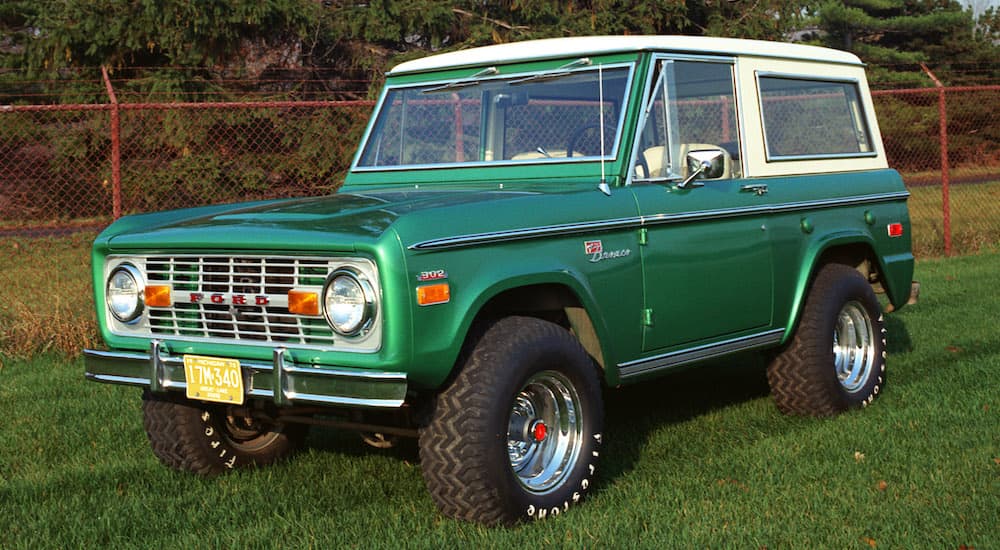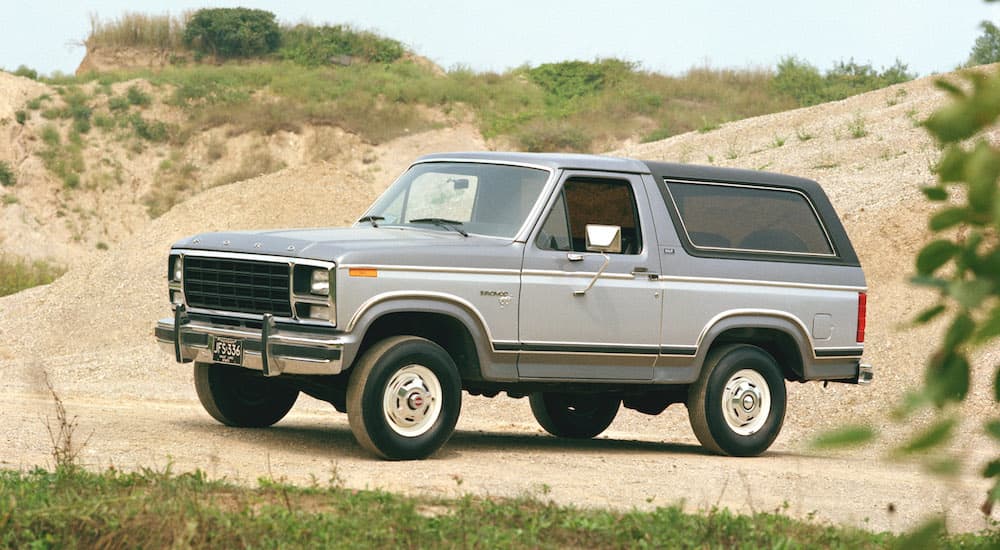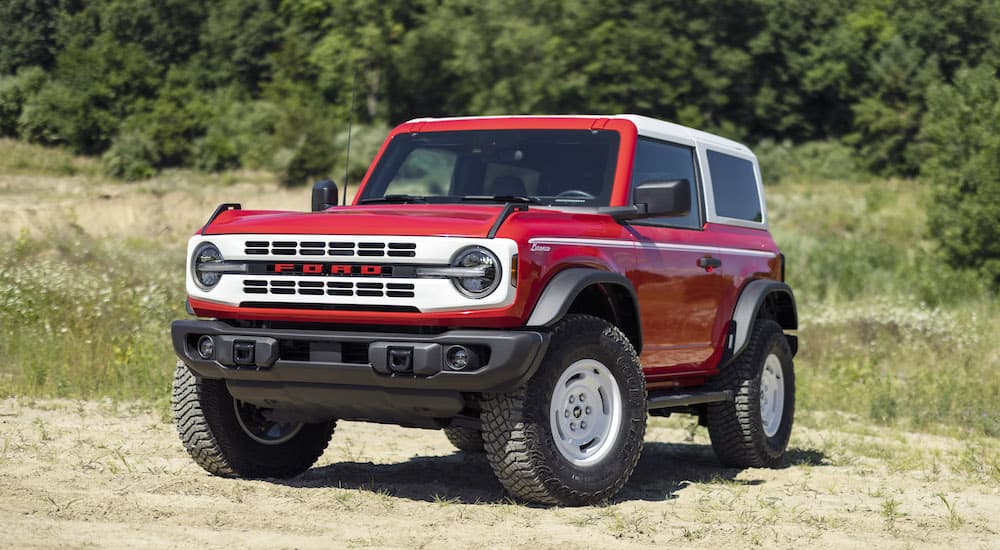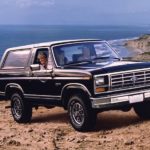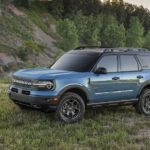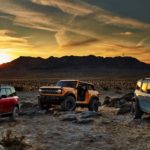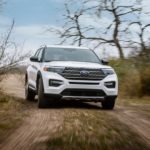With the model’s reintroduction in 2021, a whole new generation has the opportunity to become acquainted with the Ford Bronco. While some might not have ever expected to see the vehicle resurrected, its return to prominence is more than fitting, considering its legacy as one of the first SUVs to hit the pavement and travel off of it in the world of off-roading. While the SUV segment has significantly changed since the Bronco ceased production in 1996, it’s almost impossible to imagine the world without Ford’s rugged off-roader.
For years, the Bronco was the go-to choice for those who craved adventure away from the pavement. And alongside the Chevy Blazer and Jeep Wagoneer, it helped plant the seeds of the widespread popularity that the SUV possesses today. With that being said, come with us now as we turn back the pages of history and examine the birth of the Ford Bronco, its heydey, and its miraculous resurrection. If you’re considering visiting your local Ford dealership to test drive one, you might enjoy this trip down memory lane.
Early Years and an Evolving Legacy: 1966-1977
Interestingly enough, the story of the Bronco begins in an age where the fixation of many was on the muscle car. While the Mustang had established the concept of the “pony car,” which would be the standard for much of the decade, the Bronco seems like the complete opposite end of the spectrum. The creative mind behind Ford’s proto-SUV was none other than Donald Frey, the same person who conceptualized the Ford Mustang. However, the Bronco might have never gone into production had it not been for Lee Iacocca giving his seal of approval to get the gears turning.
While this concept seems like a product of American ingenuity, it was actually necessity that served as the Bronco’s mother of invention. The model’s debut for the 1966 model year was planned to compete with the Toyota Land Cruiser. Of course, there was also plenty of competition on the domestic side. In 1963, Jeep had introduced the Wagoneer, which laid the groundwork for a long-standing rivalry.
In its earliest incarnations, the Bronco was a stripped-down, cost-effective, albeit spartan mode of transportation. Still, Ford had enough foresight to understand the variety and diversity of its customer base, so three different variations were offered. The Bronco Wagon is more or less the design that would endure throughout the years. But originally, there was also a Roadster version that had no doors and bore a striking similarity to the Jeeps of old. Last but not least, there was the Bronco Pickup, which ceased production in 1972.
For powertrains, the first incarnation of the Bronco was equipped with an inline-six, capable of 105 hp. A year later, this was upgraded with a 200-hp small-block V8. Transmission options consisted of a three-speed automatic and a three-speed manual.
Streamlined Production and Further Evolution: 1978-1986
1978 was a tumultuous year. The fallout from the worldwide energy crisis was still being felt across all industries. Inflation continued to rise, and many designs in the automotive market were being altered to meet the growing demand for more fuel-efficient vehicles. As for the Ford Bronco, it entered its second generation. The change would be necessary, as both the Chevy Blazer and Dodge Ramcharger had gained considerable popularity. But Ford had weathered the storm before, and it answered the call from its competitors with a bold new redesign.
Rather than scale down the stature of the vehicle, the Bronco was now larger. No longer available as a roadster, production of the Bronco was streamlined to just one model—a three-door SUV. Despite the fallout from rising gas prices, Ford stuck to its guns, offering drivers top-notch performance. This can easily be seen in the powertrain options for the second generation. A 5.8L V8 generated 156 hp and provided 262 lb-ft of torque. A 6.6L big block was also available, which possessed the same horsepower rating but amped the torque up to 277 lb-ft. This was certainly a bold move for Ford to make. However, sticking to its guns and not deviating from design paid off for Ford, as the Bronco outsold both the Blazer and Ramcharger.
As the 1970s gave way to the 1980s, the Bronco carried on. 1980 would usher in the third generation of the Ford Bronco, now scaling back on its large powertrains in favor of engines with more conservative fuel consumption. The Bronco returned to an inline six-cylinder but kept 4.9L and 5.3L V8 options. In 1985, fuel injection was added to increase efficiency further. But those weren’t the only significant changes made by Ford during this time. 1984 would see the release of the Bronco II. Built on the same chassis as a Ford Ranger, this smaller version of the Bronco relied on much smaller engines, such as the German-produced 2.8L Cologne V6, and for a brief moment, it offered a turbo-diesel engine made by Mitsubishi. The Bronco II would remain in production until 1990 when it was discontinued and replaced by the Ford Explorer.
A Final Ride into the Sunset: 1987-1996
As the fourth generation of the Ford Bronco got underway, it received a few notable cosmetic improvements. A newly designed front end made it resemble the F-150 models of the day. While the Bronco kept the engines from the previous generation, a five-speed manual transmission was introduced for the 1988 model year. Sales continue to be plentiful for the Bronco, with 1989, in particular, producing excellent numbers.
The 1992 model would see another change in the vehicle’s aesthetic, as it once again followed the recent design changes in the Ford F-150, now in its ninth generation. In 1994, Ford reverted to only making V8 engines available, something it hadn’t done for several years. Declining sales figures and the emerging popularity of the Ford Explorer would bring about the Bronco’s final farewell. The Bronco was officially discontinued in 1996 and replaced by the Ford Expedition.
The Return: 2021
In a world where the SUV is one of the most popular choices for consumers, it only feels fitting that the Ford Bronco would return to retake the throne once more. It had been a quarter of a century since the Bronco was available, and its return was everything befitting a king. As its predecessors had done in years prior, the 2021 Ford Bronco wasted no time in going after the competition. Competing against the Jeep Wrangler and Toyota 4Runner, the rivalries picked up where the old ones left off all those years ago.
Available in two-door and four-door body styles, this was not the Bronco of old. This was a new vehicle that was more versatile than ever before. For the first time in its history, the Bronco used powertrains that weren’t powered by eight cylinders. In its place were turbocharged inline four-cylinder and V6 options. With output ranging from 270 to 310 hp, it quickly surpassed the greatness of yesteryear. A ten-speed automatic transmission is now standard, but those who go with the four-cylinder have an available seven-speed manual transmission at their disposal.
The good news kept coming for Bronco lovers, as it was announced that Ford would be releasing a Bronco Raptor for 2022. A high-performance version specifically formulated for off-roading was a distinction worthy of such an important part of Ford’s lengthy history.
The Future?
It’s hard to tell where the Bronco might go from here. But one thing is for certain––its legacy has long been etched in stone. Of all the vehicles to make a comeback in the past several decades, the Bronco deserves recognition as the most impressive.
